Meet the little ladies!
This is Dotty. She is a Barred Plymouth Rock hen. She is quite shy but still super sweet. She is the loudest of the three and "peeps" a lot during the day.
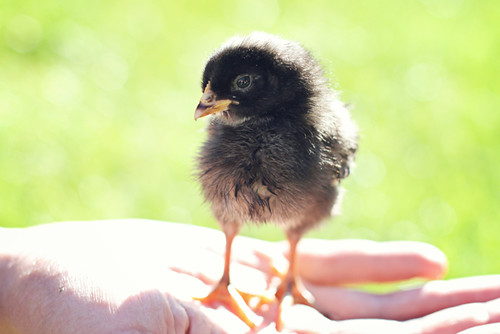

This is Daisy. She is a White Leghorn hen and she is large and in charge. She is a week older than the other two and she thinks that makes her "Mother Hen." She is a drama queen and yells bloody murder when you pick her up. She is quite the character already.
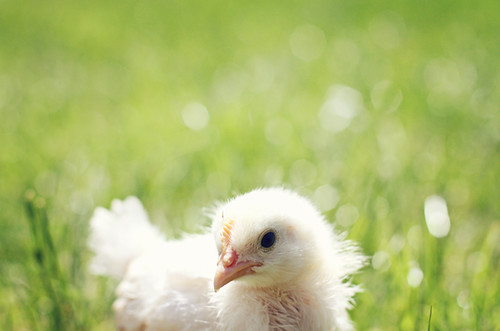
She is going to be pretty like so:

And last, but absolutely not least, Doris. She is my favorite. (don't tell the others!) Doris is a Rhode Island Red. She loves to be cuddled and is sweet little soul. She is the best at keeping herself clean and eats a whole lot.
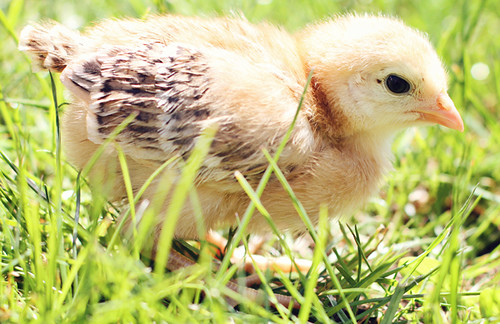
She should grow up to look like this:

They have been so much fun. We are going to enjoy the cute baby phase as much as we can because these 3 will be mature and laying eggs by August!
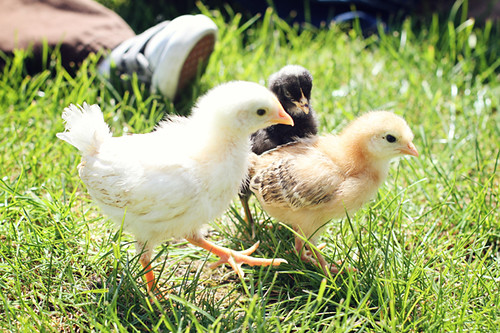
Sam is AMAZING with them. He is so gentle and they actually seem to really like him. They stay seated in his lap and allow him to pet them. Sam gets so excited to tell people about his chickens and is so proud to show them off.
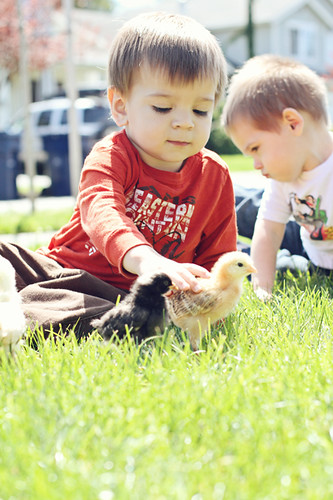
Here is Daisy doing what she does best. Protecting her "babies."

We have had lots of visitors that will hopefully get these little girls socialized.

An egg takes the hen 25 hours to make, so at most, a hen can lay 6 eggs per week. (That's 18 a week for us! Our neighbors will be getting free dozens, I promise you that.)
A minimum of 3 chickens makes a brood. If a chicken is alone, they can easily die of loneliness.
A hen lives an average of 5-7 years, but can live up to 20 years. She'll lay eggs her entire life, with production decreasing every year from year one.
Alektorophobia is the name given to "The Fear of Chickens". I have the opposite of this :)
Eggs have a natural protective coating called the "bloom", which gives the egg a slightly "matt" finish. Washing Grade A eggs before selling them to the public is illegal, as it removes this coating. In the 19th century in Ireland, a farmer could be put in jail for washing eggs.
A chicken with red earlobes will produce brown eggs and a chicken with white earlobes will produce white eggs.

4 comments:
So cute! We want to come see them too! And of course we wouldn't be opposed to taking any extra eggs you may have. I'm so excited for you!
I love them. Seriously. Although I would be quite surprised if they were laying by August. The leghorn, as a lighter breed and being a bit older, might start by then, but heavier breeds take a little longer to mature.
And that egg production is an average. Some chickens do better. If I recall, a black australorp from Australia set the laying record by laying 364 eggs in 365 days! You're going to get more out of the leghorn than the other two. In the peak of Spring, they will all lay every day, but the the total laying season for the leghorn will probably last longer than for the other two.
Wow, my chicken nerdiness just spilled out everywhere. I'm going to leave now.
"The leghorn, as a lighter breed, blahdy blah blah, I need a girlfriend, take a little longer to mature."
That's what I heard.
Also, I'm fairly certain Colton can speak to chickens. I used to run scared from my cabin to the main house because I think he told them to attack me.
Never leave him alone with them.
HAHA! I love the family war going on here at my blog. :)
Post a Comment